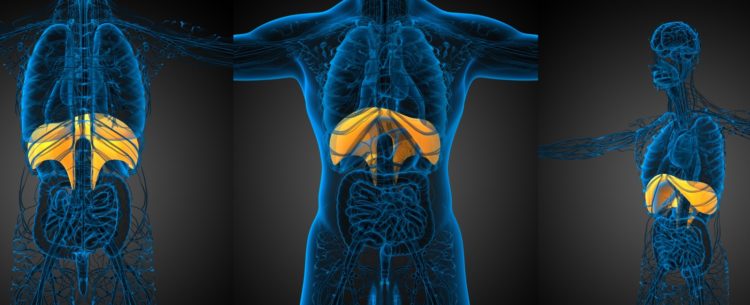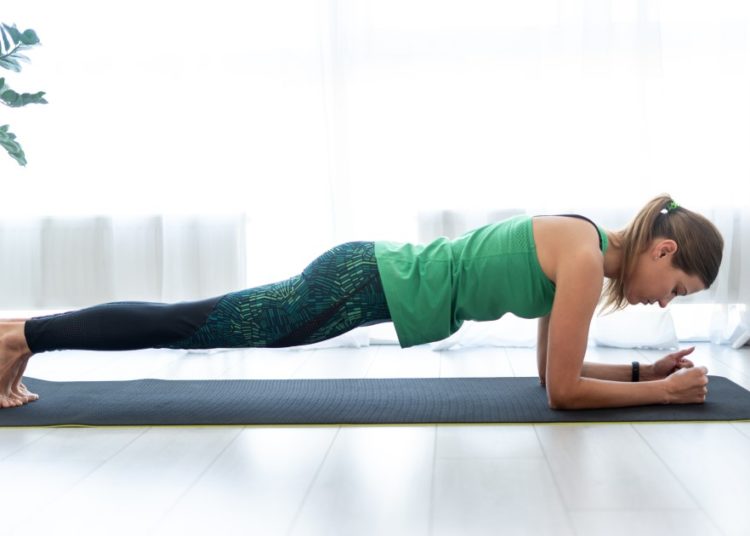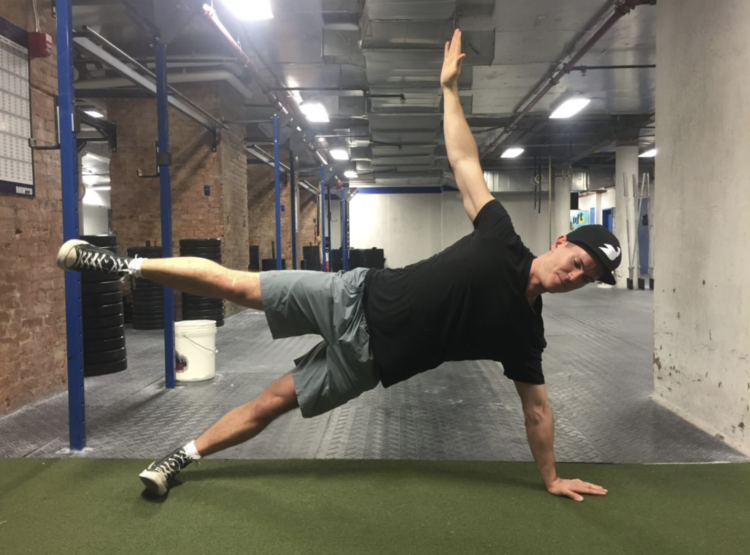When scrolling through the fitness universe on social media, you might see weird and wonderful core exercises, some good, some bad, some outright crazy. And most of these exercises are done for reps or time, such as hanging on for dear life in a front or side plank. However, there is a more effective way to increase the intensity of your planks without resorting to trickery. All you have to do is breathe.
Yes, breathe.
Because when you take a deep breath in and exhale out, you’ll train an important and neglected core muscle, the diaphragm.
What is the Diaphragm and Why is it Important?

The diaphragm is a thin, flat muscle that sits under the lungs and works closely with the deep abdominals, the pelvic floor, and the multifidus muscles in the lower back, otherwise known as the intrinsic core.
When the diaphragm pushes down while inhaling, it increases the intra-abdominal pressure and provides stabilization and support for the lumbar spine and core. Both of which come in handy when pulling a heavy barbell from the floor.
According to Taylor Lewis, CSCS, CMT, PRI-PRT, “The same muscles that help maximize respiratory function also help control posture and performance. During movement, the respiratory system establishes a rhythm of respiration to meet the energy demands of the stress being placed upon it. The stress variables dictate how much energy demand is required, but at all times the respiratory system is working to make performance outcomes happen.”
Try it for Yourself
Step 1: Brace your abs like you’re about to get punched in the stomach. Notice the muscle contraction and the tension it provides.
Step 2: Exhale all the air out of your lungs while pushing your lower rib cage down with your hands. Do you notice how similar it feels?
Step 3: Take a deep breath in and feel the stability it provides.
Turns out breathing can be a great exercise for your core. And when you add deep breathing to your core training, not only will you increase the intensity and strengthen your core; you’ll improve lung function too. (1)

Why It Matters
Breathing deeply and fully exhaling expired air allows you to get fresh oxygen to working muscles faster. This, in turn, allows for faster recovery and help improve work capacity and core function.
As Lewis puts it, “The higher demand for oxygen, the more the respiratory muscles will work as breathing muscles, and the more tension that is required to stabilize the trunk during core exercises, the more the muscles will work as core stabilizer muscles.”
Apply it to Planks
When performing standard or side planks, attempt the sets for breaths rather than for time. For example, instead of holding a plank for thirty seconds, hold it for five long deep breaths.
This targets two different types of core muscles: breathing muscles and postural control muscles.
Battle Ropes/Side Plank Combo
Instructions
Perform any battle rope variation for thirty seconds and then immediately get into side plank. Make sure to breathe down into your belly and engage your glutes. Hold this for thirty seconds.
Go back to the battle ropes for another thirty second interval, then do a side plank on the opposite side. Repeat this sequence for ten minutes or however long you are able to properly maintain the planks.
Kettlebell Swings/RKC Front Plank
Instructions
Do twenty kettlebell swings and then immediately get into an RKC Front plank. (That’s a plank where you’re pushing your forearms into the ground and squeeing the glutes tightly. It’s a lot harder.) Once you have hit full tension take 10 deep inhales (and exhales) while maintaining full tension. Repeat the kettlebell-plank sequence for 5-10 rounds.
Wrapping up
Adding something as simple as deep breathing to your planks improves your core function, posture and your ability to breathe and recover fully while under exercise stress.
You’ll like this so much you might even enjoy planks. Or not.
References
1. Luca Cavaggioni, et al. Effects of different core exercises on respiratory parameters and abdominal strength. J Phys Ther Sci. 2015 Oct; 27(10): 3249–3253.
Feature image via Shutterstock/brizmaker
